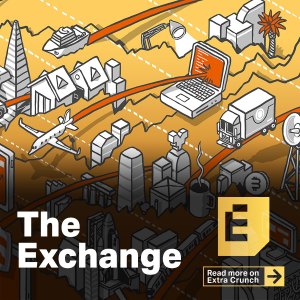A fraction of Robinhood’s users are driving itsrunawaygrowth
Yesterday's House Financial Services Committee hearing about GameStop and Robinhood wasn't great. Reuters has a good summary of one its few interesting bits, a scrap between the elected inquisitors and Robinhood CEO Vlad Tenev regarding whether or not his firm had to raise additional capital to continue operations during the GameStop saga; TechCrunch has reported on the matter since its inception, though learning a little bit more was useful.
Lawmakers also managed to extract an interesting, if expected data point: the company generates more than half of its revenues from payment for order flow (PFOF), a controversial practice in which Robinhood is paid by market makers for executing customer trades.
The Exchange explores startups, markets and money. Read it every morning on Extra Crunch, or get The Exchange newsletter every Saturday.
Those skeptical of PFOF contend that the setup effectively transforms users of neotrading services that monetize their order volume into the product being sold, leaving retail investors susceptible to poor trade execution pricing. Robinhood has gotten into trouble regarding trade pricing in the past. But those in who don't find PFOF to be an inherent issue contend that it allows for low-cost consumer access to the equities markets. That's fair enough.
 Regardless of where you land between - or even on - those two poles is immaterial. PFOF doesn't appear to be in material danger of being regulated out of existence, and Robinhood's use of the business model allowed it to generate huge growth in 2020. For perspective, Robinhood's PFOF revenues rose from a little over $90 million in Q1 2020 to around $220 million in Q4.
Regardless of where you land between - or even on - those two poles is immaterial. PFOF doesn't appear to be in material danger of being regulated out of existence, and Robinhood's use of the business model allowed it to generate huge growth in 2020. For perspective, Robinhood's PFOF revenues rose from a little over $90 million in Q1 2020 to around $220 million in Q4.
How many users did it take to generate those PFOF sums? Tenev also told Congress in his written testimony that Robinhood has more than 13 million customers," though we lack clarity on precisely who counts as customer. But those millions do not monetize equally. Some of those 13 million users are more lucrative than others.
To understand that, let's start with working to learn what fraction of Robinhood users trade options. Here's Tenev, via his testimony:
[A]s of the end of 2020, about 13 percent of Robinhood customers traded basic options contracts (e.g., puts and calls), and only about two percent traded multi-leg options. Less than three percent of funded accounts were margin-enabled.
This, combined with the fact that Tenev allowed that PFOF incomes comprise the majority of its revenue, comes to an interesting conclusion: A somewhat small fraction of Robinhood's users are responsible for the vast bulk of its incomes. We can tell that that is the case by recalling that when we examine PFOF data, Robinhood's revenues from trades in S&P 500 stocks are modest, its incomes from trades involving non-S&P 500 stocks a bit larger, and its incomes from options' order flow comprised the majority of the revenue reported in recent periods.
For example, in the months of October, November, and December, TechCrunch calculates that Robinhood's PFOF revenues were around 67%, 64%, and 63% options-derived, respectively.
For reference, 13% of 13 million is 1.69 million. That's the number of Robinhood users we estimate have traded options. The multi-leg options number is a far smaller 260,000 users.